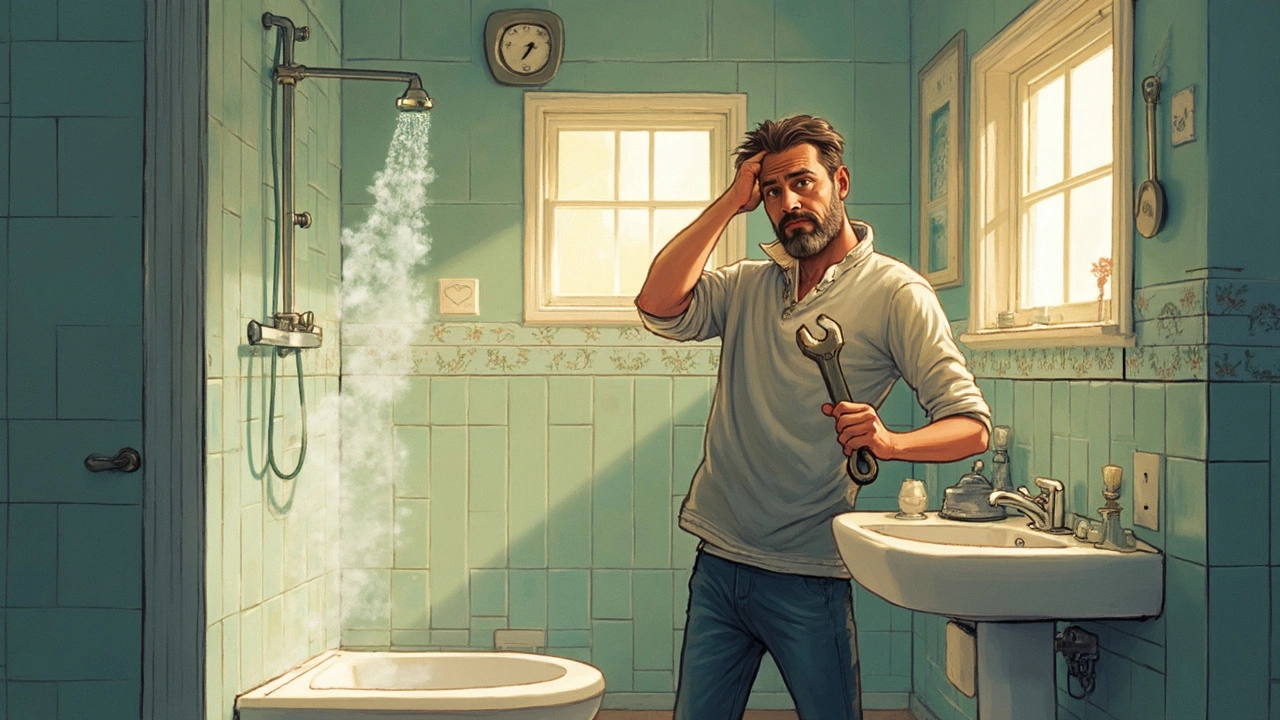Shower Problems: Quick Fixes & When to Call a Pro
If your shower is sputtering, losing pressure, or leaking everywhere, you’re not alone. Most homeowners face at least one of these issues each year. The good news? Many fixes are easy and cheap, and you can usually spot the trouble before it gets worse.
Common Shower Issues and Quick Fixes
Low water pressure. First, check the showerhead. Mineral build‑up clogs the tiny holes, causing a weak spray. Unscrew the head, soak it in white vinegar for an hour, then rinse and reattach. If pressure is still low, look at the faucet valve. A partially closed valve or a worn‑out cartridge can be the culprit. Turning the valve fully open or replacing the cartridge often restores flow.
Leaking around the faucet. Leaks usually come from worn washers or loose connections. Shut off the water, remove the handle, and inspect the O‑ring. Replacing a cheap rubber washer can stop a drip in minutes. Tighten any loose nuts with a wrench, but don’t over‑tighten – you could strip the threads.
Temperature swings. If the water suddenly gets too hot or too cold, the mixing valve may be stuck. Many modern showers have a thermostatic valve you can clean with a little spray‑type lubricant. If that doesn’t help, the valve might need replacement – a job most DIYers can manage with a few basic tools.
Noisy shower. A whistling or rattling sound often means air trapped in the pipes or a loose component. Turn on the water at full force for a minute to purge air. If the noise persists, check the shower arm for tightness; a simple hand‑tighten usually quiets it down.
Clogged drain. Hair and soap scum build up quickly. Remove the drain cover and pull out visible debris with a straightened coat hanger. For tougher blockages, a mixture of baking soda and hot water works well – pour a cup of baking soda, wait 15 minutes, then flush with boiling water.
When to Call a Pro
DIY can solve most minor issues, but some problems need a licensed plumber. If you notice rust‑colored water, it could be corroded pipes – that’s a sign of bigger plumbing work. Persistent leaks behind the wall, or a shower that floods the bathroom, also require professional help. A pro can replace damaged pipe sections and ensure everything meets local codes.
Another red flag is a constantly tripping breaker when the shower runs. This points to an electrical fault in an electric shower unit, which is dangerous to tinker with. Call a qualified electrician or plumber who specializes in shower installations.
Finally, if you’ve tried the fixes above and the shower still misbehaves, it might be time for a full replacement. New showerheads, valves, or even a whole system can boost efficiency and save water, which pays off in lower bills.
Keeping your shower in good shape doesn’t have to be a nightmare. Regularly clean the head, watch for early signs of leaks, and don’t ignore sudden temperature changes. With these simple steps, you’ll enjoy a strong, steady stream every time you step in.

Hot Water in Sink but Not Shower? Here's What's Going On
Experiencing a lack of hot water in your shower while your sink works just fine can be a head-scratcher. This anomaly usually points to specific plumbing issues or equipment malfunctions. In this article, we'll unravel the mystery behind why hot water may flow from your sink but not your shower, offering practical tips and solutions to restore your shower's warmth.